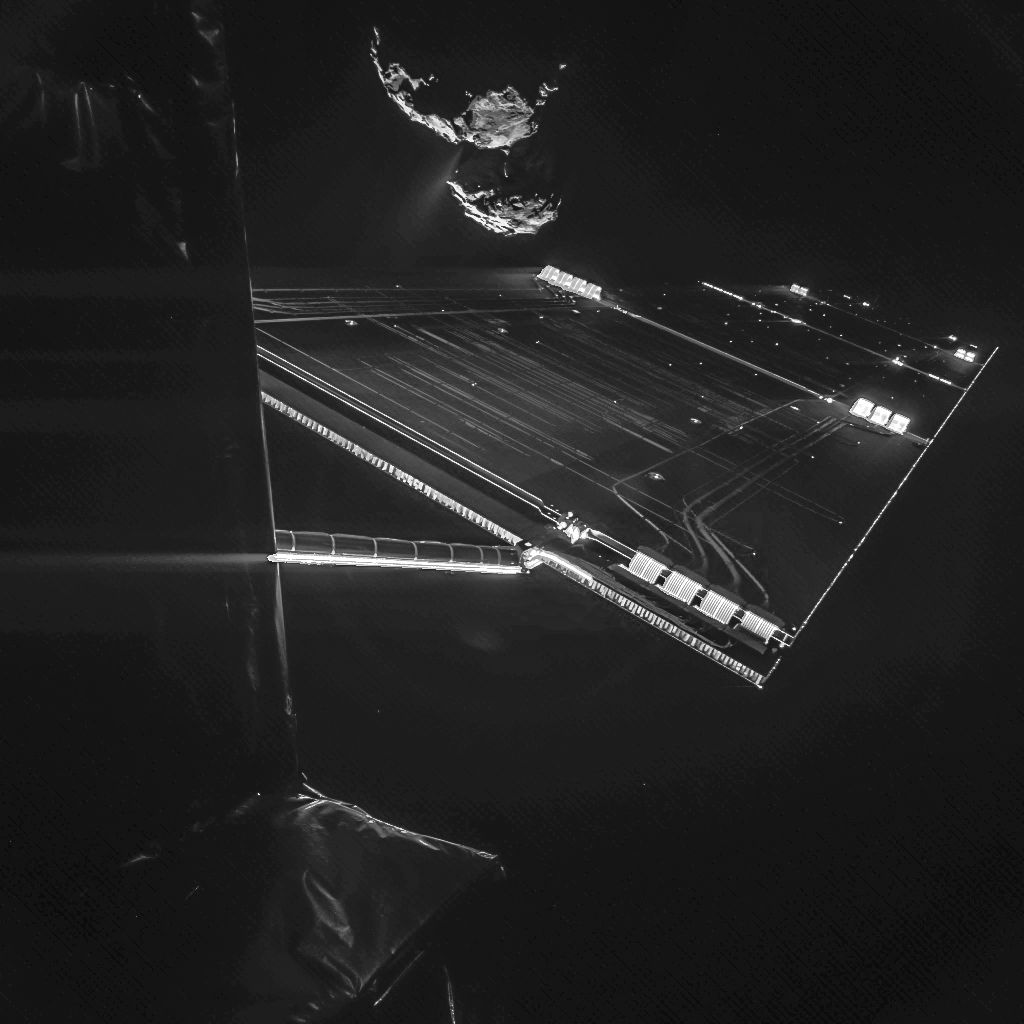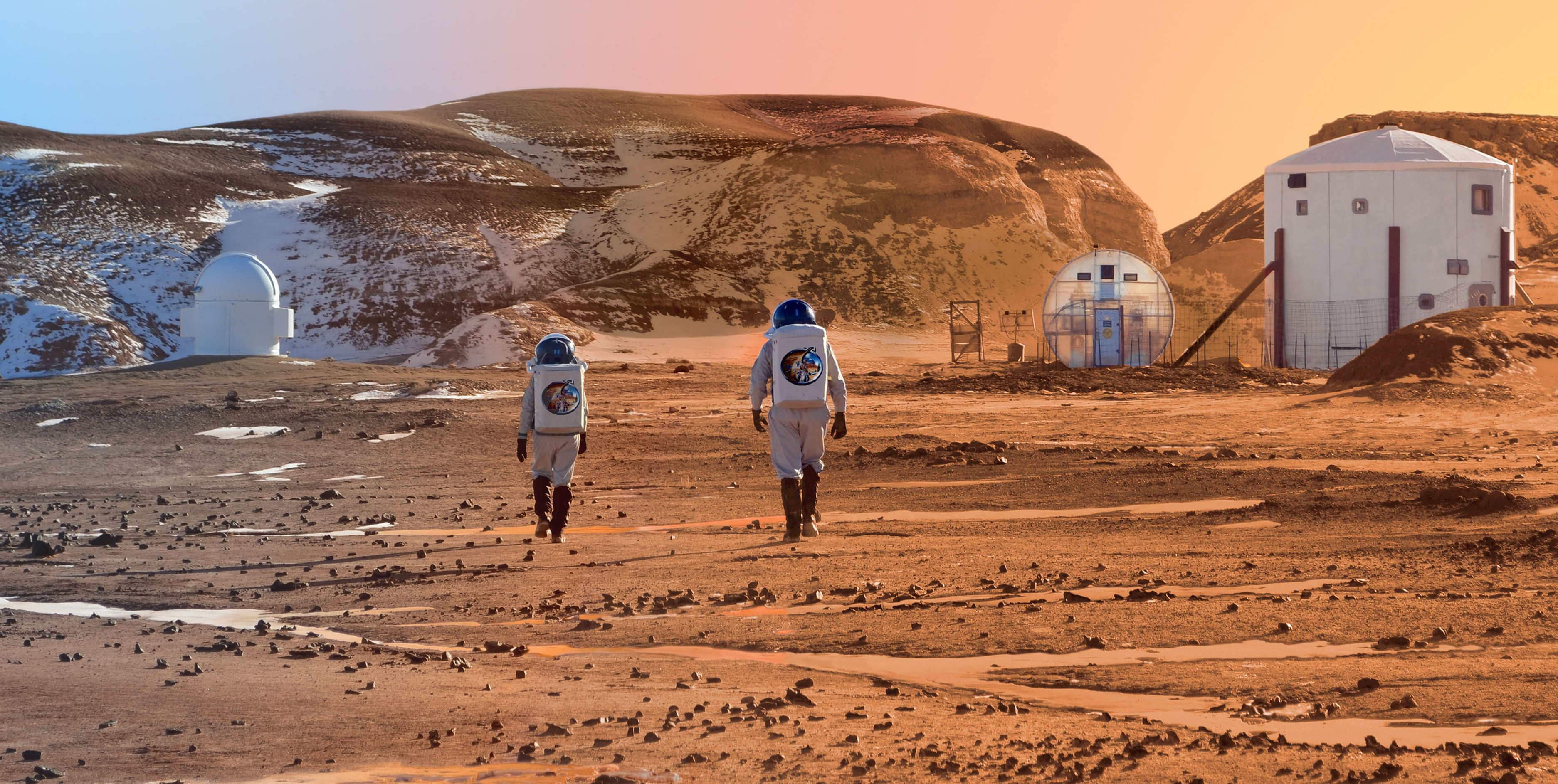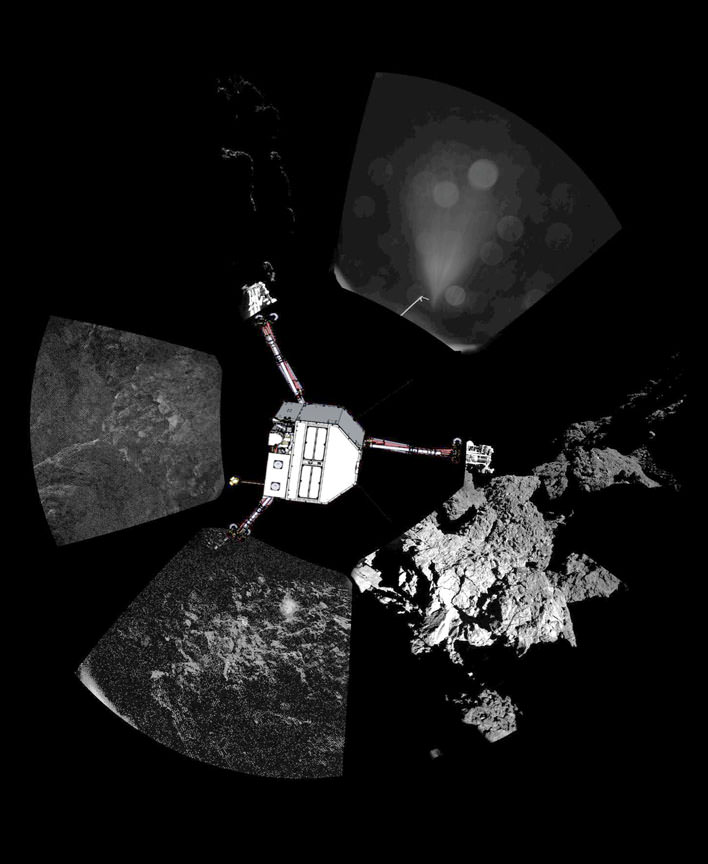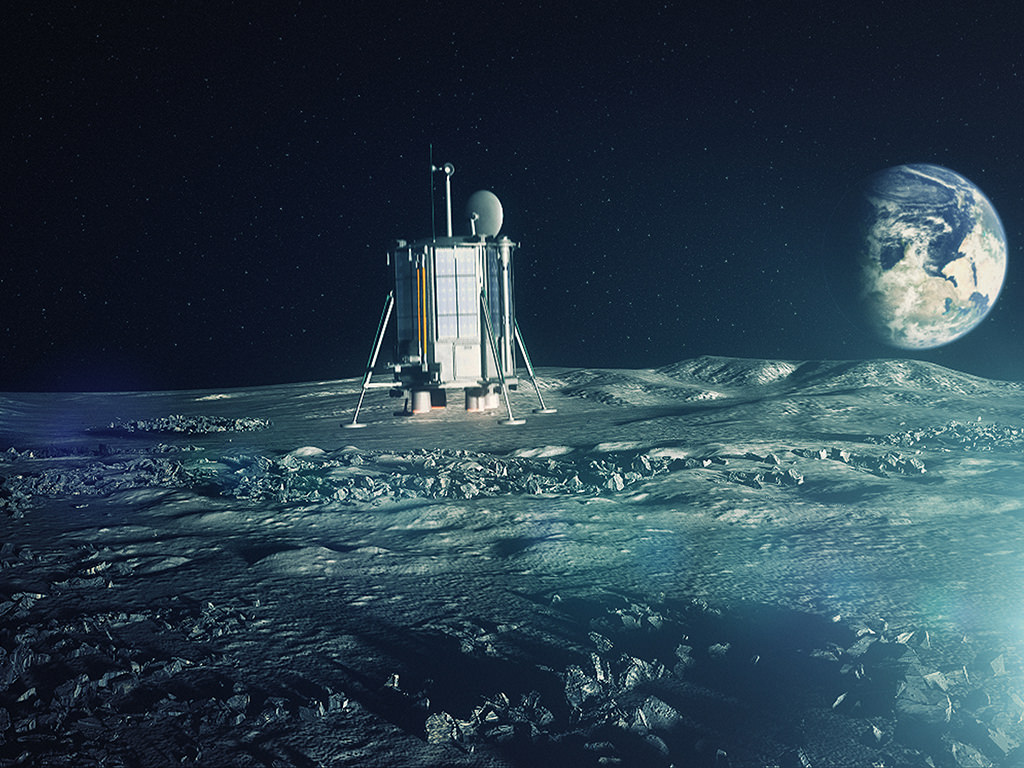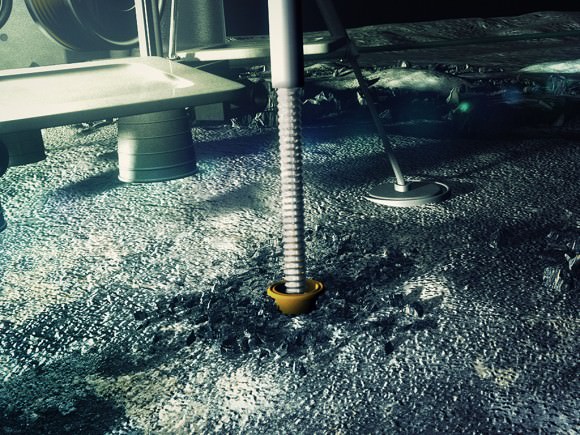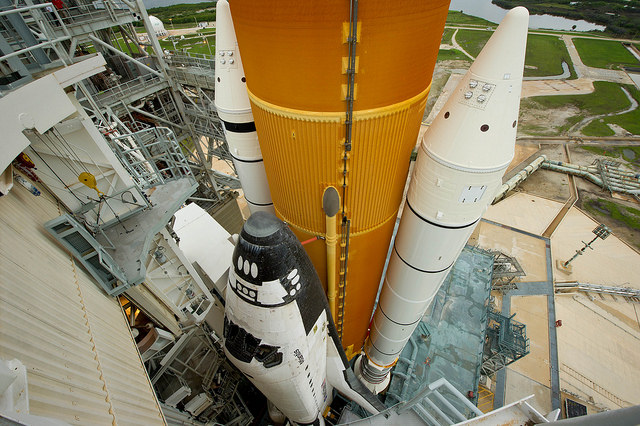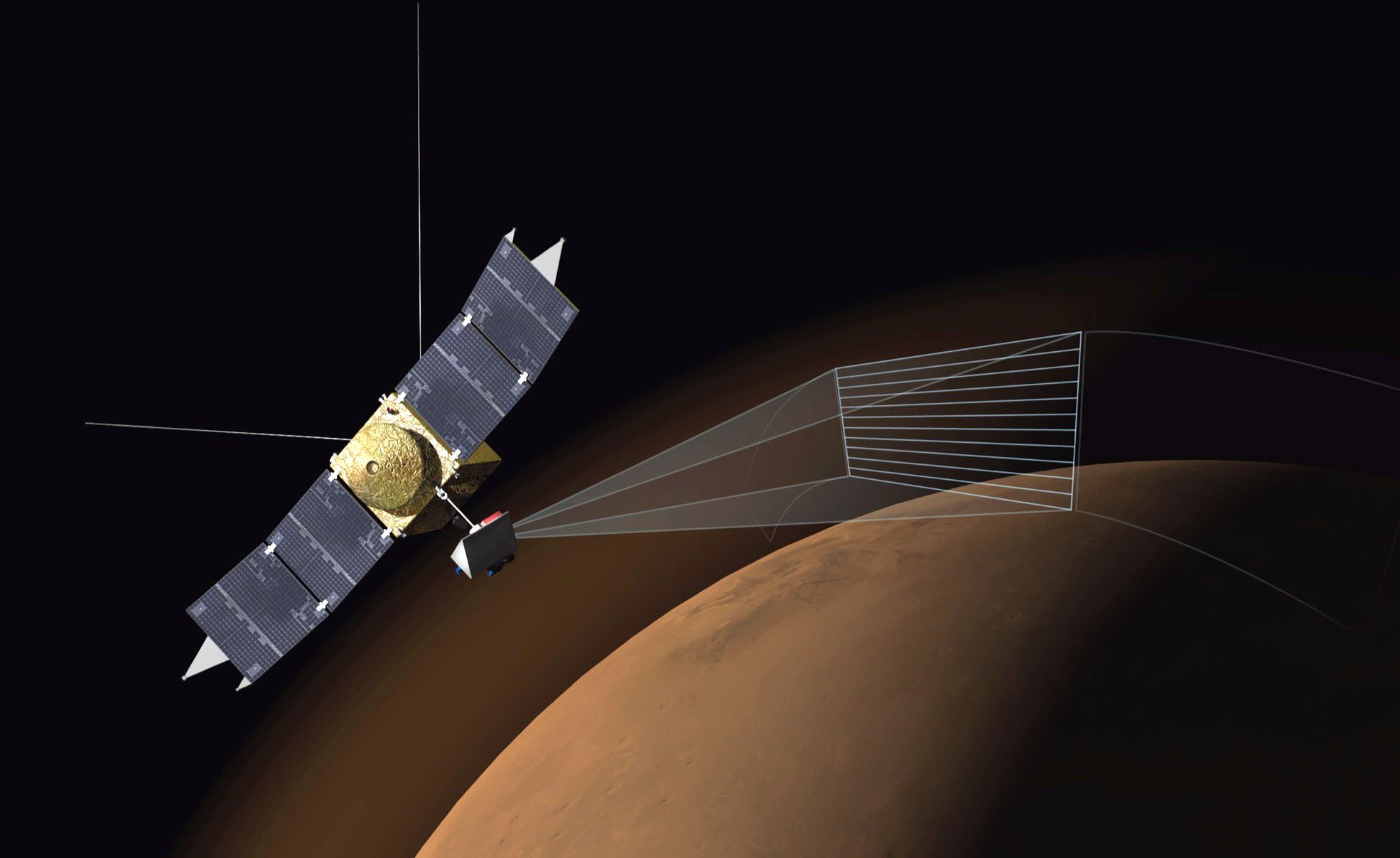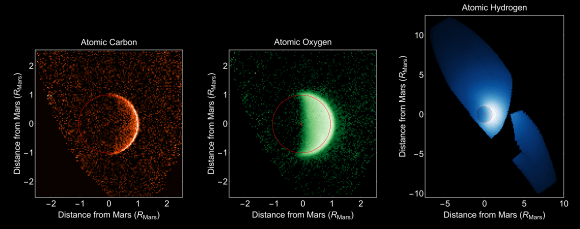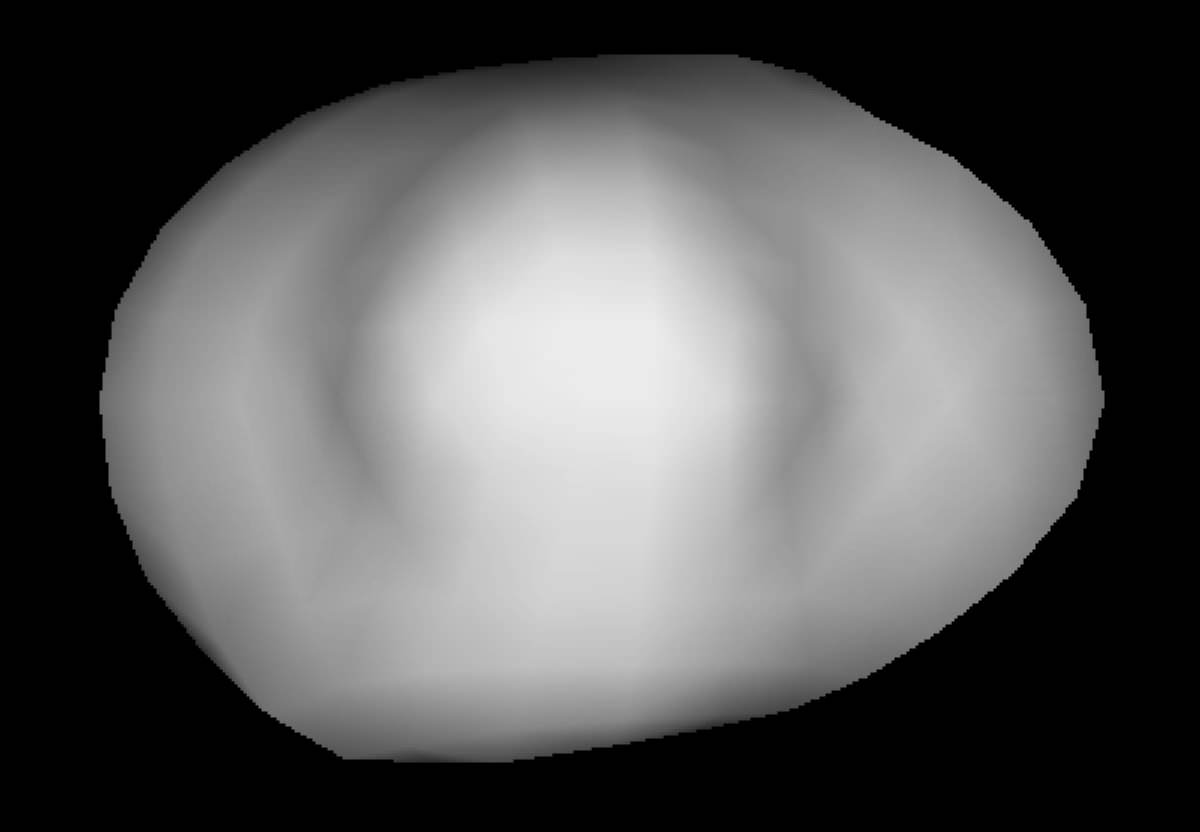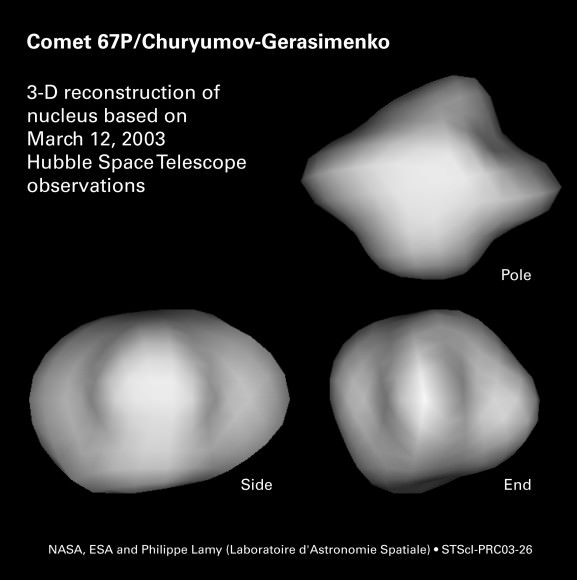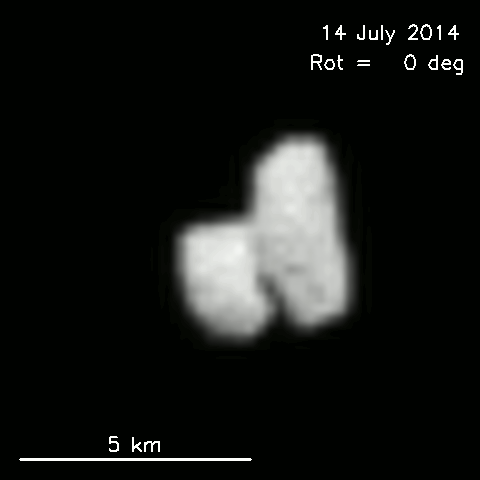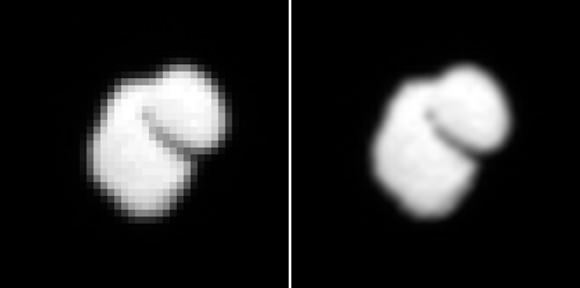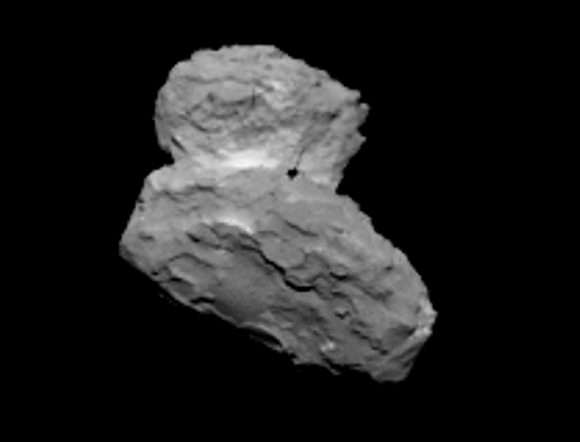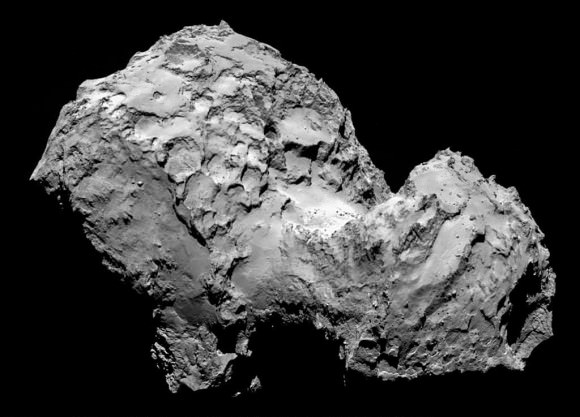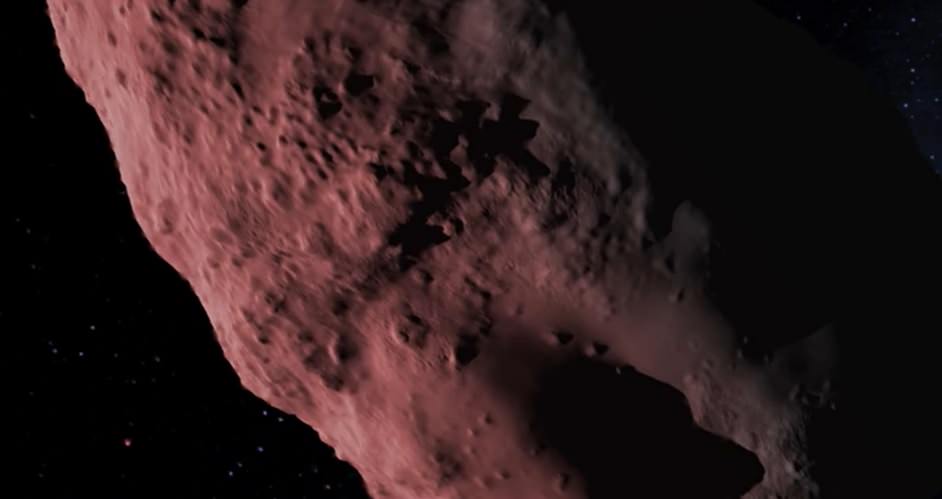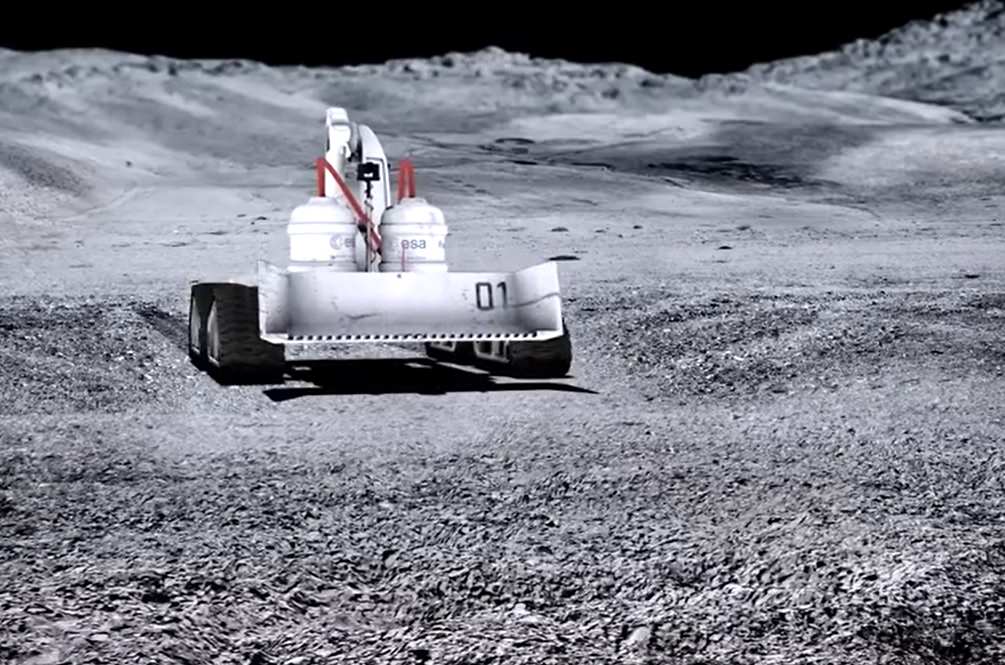Iconic Kennedy Space Center Countdown Clock seen here retires
NASA’s 135th and final shuttle mission takes flight on July 8, 2011 at 11:29 a.m. from the Kennedy Space Center in Florida bound for the ISS and the high frontier with Chris Ferguson as Space Shuttle Commander. Credit: Ken Kremer/kenkremer.com
Story updated and more photos[/caption]
In another sign of dramatically changing times since the end of NASA’s Space Shuttle program, the world famous Countdown Clock that ticked down to numerous blastoffs at the Kennedy Space Center Press Site and was ever present to billions of television viewers worldwide, has been retired.
Years of poor weather and decades of unforgiving time have visibly taken their toll on the iconic Countdown Clock beloved by space enthusiasts across the globe – as I have personally witnessed over years of reporting on launches from the KSC Press Site.
It was designed in the 1960s and has been counting down launches both manned and unmanned since the Apollo 12 moon landing mission in November 1969. And it continued through the final shuttle mission liftoff in July 2011 and a variety of unmanned NASA launches since then.
The countdown clock’s last use came just two months ago in September 2014 during the SpaceX CRS-4 launch to the ISS, which I attended along with the STS-135 launch.
The clock is located just a short walk away from another iconic NASA symbol – the Vehicle Assembly Building (VAB) – which assembled the Apollo/Saturn and Space Shuttle stacks for which it ticked down to blastoff. See photo below.
A new clock should be in place for NASA’s momentous upcoming launch of the Orion crew capsule on its inaugural unmanned test flight on Dec. 4, 2014.
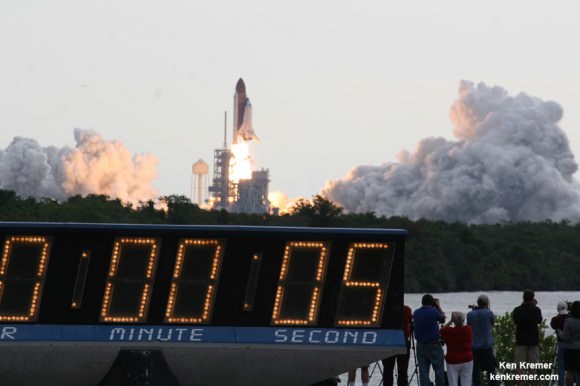
Because of its age, it has become harder to replace broken pieces.
“Maintaining the clock was becoming problematic,” NASA Press spokesman Allard Beutel told Universe Today.
It displays only time in big bold digits. But of course in this new modern digital era it will be replaced by one with a modern multimedia display, similar to the screens seen at sporting venues.
“The new clock will not only be a timepiece, but be more versatile with what we can show on the digital display,” Beutel told me.
The countdown clock is a must see for journalists, dignitaries and assorted visitors alike. Absolutely everyone, and I mean everyone !! – wants a selfie or group shot with it in some amusing or charming way to remember good times throughout the ages.
And of course, nothing beats including the countdown clock and the adjacent US flag in launch pictures in some dramatic way.
Indeed the clock and flag are officially called “The Press Site: Clock and Flag Pole” and are were listed in the National Register of Historic Places on Jan. 21, 2000.
The clock was officially powered down for the last time at 3:45 p.m. EDT on Nov. 19, 2014.
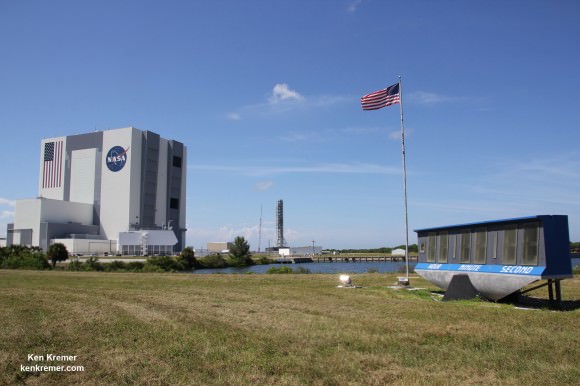
“The countdown clock at Kennedy’s Press Site is considered one of the most-watched timepieces in the world and may only be second in popularity to Big Ben’s Great Clock in London, England. It also has been the backdrop for a few Hollywood movies,” noted a NASA press release announcing the impending shutdown of the iconic clock.
“It is so absolutely unique — the one and only — built for the world to watch the countdown and launch,” said Timothy M. Wright, IMCS Timing, Countdown and Photo Services. “From a historical aspect, it has been very faithful to serve its mission requirements.”
The famous landmark stands nearly 6 feet (70 inches) high, 26 feet (315 inches) wide is 3 feet deep and sits on a triangular concrete and aluminum base.
Each numerical digit (six in all) is about 4 feet high and 2 feet wide. Each digit uses 56 40-watt light bulbs, the same ones found at the local hardware store. There are 349 total light bulbs in the clock, including the +/- sign (nine) and pair of colons (four), according to a NASA statement.
The new clock will be about the same size.
Fortunately for space fans, there is some good news!
The Countdown Clock will be moved to the nearby Kennedy Space Center Visitor Complex (KSCVC) and placed on permanent display for public viewing.
Details soon!
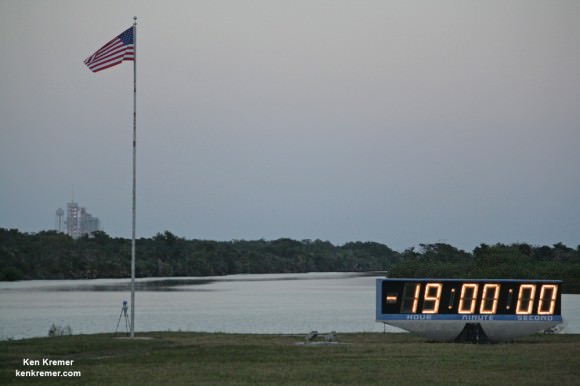
Stay tuned here for Ken’s continuing Earth and Planetary science and human spaceflight news.


